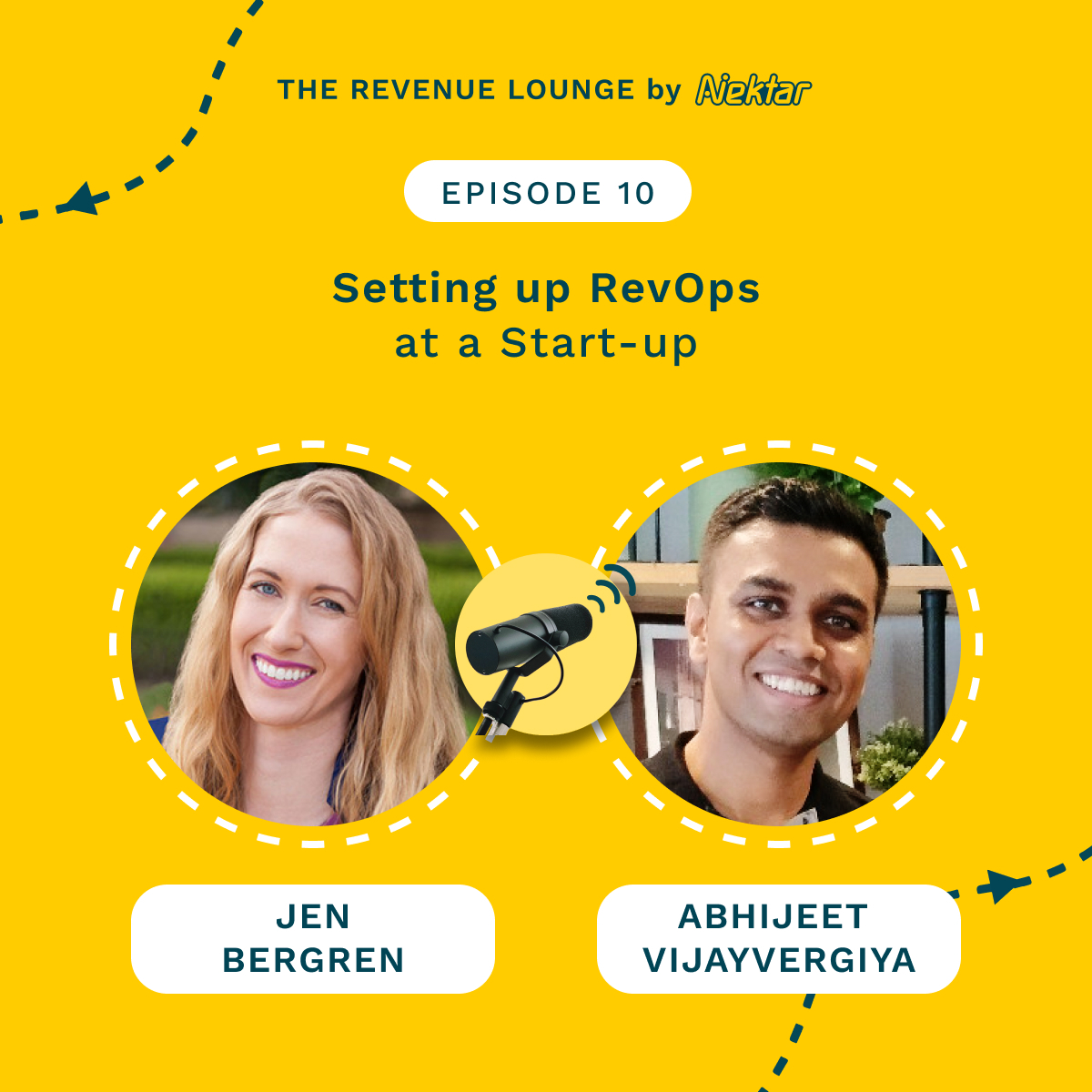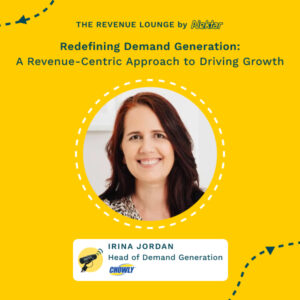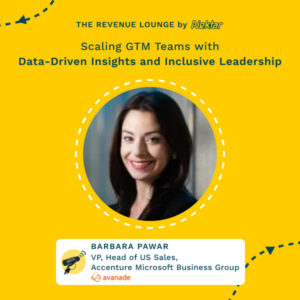Driving Revenue Growth with Data-Driven Sales Enablement ft. Penny Springer
January 22, 2025
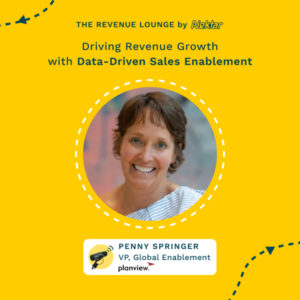
About
The Revenue Lounge
The podcast covers stories from leaders across RevOps, Sales, Customer Success, GTM, Data and Marketing about what drives these functions and what advice they would share with our listeners. With 3 seasons recorded, the podcast currently features 50+ enterprise leaders in the B2B SaaS domain. Tune in to hear from the best in the business
Summary
In this episode of the Revenue Lounge podcast, host Randy Likas and guest Penny Springer discuss the evolution of sales enablement, emphasizing its shift from traditional training to a focus on measurable outcomes and revenue growth. They explore the importance of data-driven strategies, the concept of ‘coaching to action’ to bridge the gap between enablement and results, and the metrics and tools used to measure success. Penny shares success stories, the challenges faced in tailoring enablement for diverse functions, and the role of AI in enhancing sales processes. The conversation concludes with insights on future trends in enablement and advice for aspiring leaders in the field.
Takeaways:
Sales Enablement is now focused on measurable outcomes and revenue growth.
Data-driven strategies are essential for effective enablement programs.
Coaching to action helps bridge the gap between enablement and results.
Accurate data reduces bias and increases accountability in sales teams.
Success stories highlight the impact of enablement on pipeline growth.
Tailoring enablement programs is crucial for different functions.
Overcoming challenges in enablement requires strong relationships and clear metrics.
AI is transforming the sales enablement landscape.
Continuous learning and adaptation are key for enablement leaders.
The future of enablement will be shaped by data and technology.

Randy Likas (00:02.69)
Sales Enablement is no longer about providing training and resources. It’s about driving measurable outcomes and impact revenue growth. Enablement leaders are tasked with not only empowering teams, but also ensuring that their efforts directly contribute to pipeline success and deal closures. Hello, everyone. Welcome to the Revenue Lounge podcast. I am your host, Randy Likus. In this episode, we will explore how data-driven sales enablement can transform the way organizations drive results, from leveraging metrics to creating effective programs.
to ensuring cross-functional alignment and measuring the impact of revenue. We’ll uncover actionable strategies to bridge and gap between enablement and impact. And joining me today is Penny Springer. Penny is the Vice President of Global Enablement at PlanVue. She leads a global team that excels in building an enablement for sales, CS, PS, and partners to expedite revenue growth of PlanVue. Penny, thank you so much for joining us today.
Penny (00:57.237)
Happy to be here. Thank you, Randy.
Randy Likas (00:59.938)
Yeah, so I’m looking forward to the conversation. I usually like to start with just a little bit of a background. So maybe you share a little bit of an overview of your career overall and your current role at PlanVue and how maybe enablement has evolved to become a critical driver for revenue growth within your organization.
Penny (01:19.765)
Absolutely, and I have a really interesting career journey, which I think is dynamic, but yet critical to what I can bring to the business. Started out very technical. actually have chemistry, math, and physics degrees. Started out as a product development chemist, within a couple years, my manager tapped me on the shoulder and said, have far too much verbal exuberance and energy. You’re scaring the other chemists. So I went into sales. Was successful in sales for quite a few years.
Randy Likas (01:40.526)
Yeah
Penny (01:48.289)
then took some time off for family and went into teaching. So got my second master’s degree. First was in leadership. Second one was in actually teaching, master of arts in teaching. And I taught high school chemistry and physics for nine years. So curriculum develop and learning design, have all that, been there, done that, that team. Then I went back to, because I love change, the periodic table hasn’t changed since 1880. So I was getting a little bored. So I went back into sales.
Randy Likas (02:01.88)
Wow.
Randy Likas (02:13.294)
you
Penny (02:16.961)
And then this thing called sales training, sales enablement, revenue enablement has just skyrocketed. And I’ve had a fantastic journey over the years transitioning to all of those different things. So now I’m revenue enablement, used to be sales enablement. So I carried a bag. I have the curriculum design. I have the learning development. So I’m a unique person in this role compared to a lot of my peers. So bring a lot of experience to the table, but.
What do I do at Planview? So I do have what we, the go-to-market team, we call them the field, anybody who goes under the CROs, so your BDRs, your SDRs, your AEs, your SCs, any solution consultants. We like to have consistency across the organization, the CSMs. Then we have customer services. So we found that our professional services and our care and also our renewal specialists need that same messaging across the organization.
Randy Likas (02:48.718)
Thank you.
Penny (03:12.087)
And then it’s so important we bring in our partners. So that’s where I’m saying I have across the aisle, separate different aisles if you want to go politically there for just some fun, three different really unique audiences, but there’s a lot of consistency what we do for enablement between the three.
Randy Likas (03:29.42)
Wow, so you certainly have your hands full. That’s quite a bit. Well, one of things we care about a lot is how companies use data at Nectar. And so I’d be curious, how do you use data and leverage data and metrics to build effective enablement programs within PlanVue? And maybe if you could provide a couple of examples of how this approach has driven measurable results in the past.
Penny (03:54.985)
Yeah, it’s true. It’s for me it is a lot. So it’s really spending time in QBRs and listening to quarterly business reviews. What are the gaps and things like this too? I use AE pipeline. I use quota attainment. I use deal win rates, lost reasons. I love to listen to chorus calls and dig in and find out what my AEs and my solution consultants are doing. We look at time to deal and then we like to also look at
tracking revenue, completions, performance. So one of the success stories is really on in my career with PlanVue, we built a 90 day ramping program. And I say it’s ramping, it’s not onboarding. Onboarding is what HR does, know, get you into your tools, your systems, culture. We talk about, we ramp you to messaging alignment and the tools that you will use to be successful. And we have a 90 day program and we had a variable connected to completion of the 90 day program.
Randy Likas (04:35.98)
Right.
Penny (04:51.577)
And when I was there, CRO reported the results shortly after we implemented this that we yielded 96.5 % ramped quota attainment in Q2 a couple years ago, right after we launched the program. So measurable results with new ramping AEs, which is so critical.
Randy Likas (05:02.03)
Wow.
Randy Likas (05:10.254)
Yeah. So a curious tip, when I saw online, you’re about 1,600 employees, give or take some. So how many go-to-market people are there the organization that you’re ultimately helping enable?
Penny (05:18.713)
Correct. Correct.
Penny (05:26.585)
Yeah, I was going to say let’s go around 300, 350, you know, depends upon which, you know, like I said, I’ve got customer success. have, you know, partner orgs. So yeah, let’s go about 350.
Randy Likas (05:29.944)
So good size, yeah. Yeah.
Randy Likas (05:38.796)
Yeah, good size. So in the green room, we talked a little bit about this concept that you talk about, which is coach to action. Can you explain a little bit about what that means and how that translates to the different enabled initiatives that you work on?
Penny (05:53.027)
Sure, and this really came about, I had a unique opportunity last year. So one of my CROs, my EMEA CRO, and I can mention David Stevens, because I’m a huge fan, we work extremely well together. He had slacked me a message and he goes, I got a crazy idea. And knowing me, I go, I like crazy, let’s talk. So what happened was he was trying to fill our first line sales leader role in EMEA.
And as we know, it’s challenging not only to get new people in Numea, but get them on time and things like this. So he said, would you come over or would you remote be my interim first line sales leader over in Numea? And I’m like, that sounds like a fantastic opportunity because as enablement people, we are always handing off our enablement to our first line sales leaders to implement and to coach.
And so what happened was when I was that interim RVP last year, we had some new product enablement that I, my team had put out. And so I had a team meeting and I said, well, let’s practice a little bit. Let’s talk about which customers are you going to talk to and let’s practice how you’re going to talk about that. Crickets. No, they had completed the enablement, checked the box, but they weren’t ready to put it to action coach to action. So what we started doing is.
Randy Likas (07:12.141)
Yep.
Penny (07:14.219)
Okay, I’m your customer. What’s your first line? What’s your opening line in your email? What? How are you going to start talking about who you’re talking about? Have you identified the right personas? So that’s that coaching to action. So what I look at is my first line managers are a bridge between the enablement and the results that start to happen. And I always have a call to action on each one of my enablements. Like what are you going to do with this enablement? How is this going to change?
Randy Likas (07:32.267)
Okay.
Penny (07:42.517)
who you’re talking to, what opportunities you’re working on or whatever. And so then I want to see in the one-on-ones, are the sales leaders actually coaching to action? Are they following up on those accounts that they identified in the call to action? And then that’s where we’re going to be able to start measuring in Salesforce, the opportunities and the results. So that’s where I think my first line sales leaders or my first line manager are such a huge bridge between enablement and getting the results that we want. So coach to action is something I kind of coined.
Randy Likas (07:46.477)
Yeah.
Randy Likas (07:55.822)
Mm-hmm.
Penny (08:12.227)
Hopefully I’m gonna win with it.
Randy Likas (08:12.342)
Yeah. Well, I think it makes so much sense because I have been part of so many trainings or sessions where we all get together. company spends a lot of money to get us everybody together. We go through all this great enablement. then Monday, we all leave excited. Monday comes and guess what? We got all our challenges and priorities and everything else and what we learned a couple of days ago.
just goes put to the back of the brain, not because we don’t want to use it, but because we’re not used to it. The habit and the repetition hasn’t taken place. And so, unfortunately, months later, all that great enablement that we received hasn’t really been implemented or actioned on. And so what I love about the idea of Coach to Action, and specifically your call out on holding frontline sales managers accountable, to make sure that as you’re listening to calls or as you’re talking with them, we, enablement’s just not a one-time thing. It’s a consistent.
Penny (09:05.337)
Correct. Yeah.
Randy Likas (09:06.072)
thing, correct. And so that’s what I love about the idea of coach to action. Anything you’d add there?
Penny (09:10.499)
Well, and I just look at it too as you know, if you’re a learning person, there’s the forgetting curve. If you don’t use it, you lose it. So that’s a part of it too. I love the Christmas mug. And then the second part about it is too is beyond the forgetting curve, it’s a change of behavior. Remember, we are changing behaviors. And if anything else, you’re like, I’m gonna drink more water every day, or I’m gonna get to the gym or I’m gonna eat healthier. It doesn’t happen in one or two or three things. It’s a change of behavior. You need a coach.
Randy Likas (09:19.726)
Thank
Penny (09:39.299)
First Line sales leaders are that coach. I’m very passionate about coaching also and so working with my First Line sales leaders of how critical you are to help make your people successful and it’s how you approach them and we could talk more on that but that’s a big part of it also.
Randy Likas (09:56.366)
Great. I have a question. I’ve never asked this before, but I’m curious. What are the measurement metrics that enablement has to the business? Are you tied to quota attainment? I’m just curious, how is an enablement leader measured and what some of OKRs are?
Penny (10:00.861)
Penny (10:20.279)
Well, you kind of jumped ahead of some of the things that we evaluate, but internal team, do that satisfaction on each one of the enablement. Was the team satisfied with the enablement? And then partners, we do the same thing too. And we also measure certifications for our partners, but we are looking at sales lengths type, the ramp time, the win rates and the enablement completion of those 90 days and things like that too. We are measuring those, but remember it’s not one thing because I can have two reps that can come in.
and have complete their ramp, but one of them has, as we know, first opportunity comes within 15 days and they’re successful and they’re coached the second one isn’t. So there’s a lot of factors I always say, but these are some of the things that we are looking at to be able to measure effectiveness. I do have a good story coming up on another part of how we measure.
Randy Likas (11:10.572)
Yeah, great. OK. So you mentioned that you use Chorus to listen for calls. But curious what other tools that you might use to measure the adoption of the enablement, the pickup of the enablement. I guess the question is, how do you actually measure with, and you answered it in improvements in certain metrics like win rates and
But just curious, what are the tools that you use to help identify and measure?
Penny (11:44.407)
Well, OK, so we also use saleshood. So that’s my platform so I can see individually. Did they complete the enablement and then I can be able to see did the manager coach him on certain things that they needed to be coached on. know, certain enablement is like check the box. You know you did the quiz. Some of them are like submit a pitch or submit your email you want to look at and I do really focus on how.
the first line sales leaders or managers are actually coaching within the platform. I can see all that, which is fantastic. I have a fun story about how that we did a pitch and everybody was given a 10 out of 10 out of 10 out of 10. And I’m like, really? If you’re a person that’s remember the old Nadia comedy each when she was perfect, then we changed it. Nobody’s perfect on everything. So I, what I did is I took a kind of a montage video of all the tens and did a little short sound bites.
and said, are these really a 10 out of 10? Sent it to my CRO at the time. And he’s like, Penny, I lost my appetite. So it’s also making the leaders accountable for the coaching. And I can do that within the platform. So that’s one of the pieces too. And then it’s taking it and connecting it with some of the things in Salesforce. And we have BI tools and things that we do also. So it’s connecting that to revenue and working with your sales ops, your revenue ops people.
Randy Likas (13:06.742)
Yeah. I guess a bit of an extension of the question, a follow on that. So you’ve got different tools that you use and the tools are only as valuable as the data that gets in them, meaning are people completing surveys and customer satisfaction, things like that. So guess what role does clean and actionable data play in helping improve, I guess, visibility across the different functions that you support?
Penny (13:34.341)
it’s huge. I think it’s also one of the big things I think that it reduces the bias. So I hear so often that seller is doing well or he or she has done well in the past. You know, let’s talk about the data. So if we have data on the pipeline, which is accurate, we have enablement quota, enablement, you know, the completion data, and I’ve got the quota attainment. And this is more meaningful results. And what it does is it reduces the bias.
Randy Likas (13:41.782)
Uh-huh.
Penny (14:04.151)
and increases accountability. So I’ll have monthly meetings with my managers and I’ll pull up dashboards on their teams and say, here’s what you’ve completed and here’s what you need. And by the way, it’s easy for the next line leader to review and hold people accountable. So having accurate data for me reduces the bias, increases accountability, absolutely.
Randy Likas (14:25.87)
What do you do in the absence of data? What do you do when maybe people don’t have, haven’t been as compliant? Like what are some strategies to get it?
Penny (14:35.725)
Well, that’s the biggest challenge. And if you are an able-man professional and you don’t have some sort of platform, I’m going to say it’s going to be really hard to be successful. That’s what I have found over my career. that’s just the biggest challenge.
Randy Likas (14:52.398)
Yeah. Any strategies or recommendations for companies that maybe don’t have it or have a difficult time getting it? What do you do?
Penny (15:03.245)
Well, that’s just the thing too. If you don’t have an LMS or you don’t have an enablement platform and you don’t have some way of getting data, you’re going to have to put a really strong business case for your two-year leadership that you’re not going to be effective in measuring your programs. Yeah.
Randy Likas (15:15.148)
Yep. Yep. Yep. Great. Well, let’s get real tactical here. I’d love to hear you share a story, a success story, where maybe a big enablement program or initiative that you worked on directly impacted pipeline growth or closed deals. So anything you could share there?
Penny (15:36.151)
Yeah, and this one’s a relatively new one, which is fantastic. So we came out with some new service offerings. So we were tasked to put together enablement on service offerings. And so we did. And the call to action after they completed, like, here’s the customer facing deck. Here’s the enablements. It tells you all about it. Here’s the FAQs and short video that explains that the big why, which I always start with why. So the call to action was.
put in two different accounts that you’re going to go and meet with and talk to them about these new service opportunities. So once again, very specific call to action. Here’s your account. What are you going to do about them? So what we did was we pulled all those accounts and we sent them to the first line leaders and went, okay, you’ve got these accounts. Are you following up? Where’s that coach to action? Remember to make sure that you’re following up on these.
So then we pulled from revenue ops or sales ops in all the different opportunities that were created. So 45 days post enablement, we had 31 new opportunities in Salesforce for $4 million. So that’s an amazing pipeline creation. Roughly impact to we have new servicing, you were enabled, we were coached to action. There we go. Now we’ve got impact.
Randy Likas (16:44.557)
Yeah.
Randy Likas (16:54.19)
That’s a great story. And certainly that pipeline will generate in closed one, which then you can tie your revenue number back to it.
Penny (17:02.449)
Exactly. So that’s what the hope is. you know, that was 45 days post. We still have some laggards, so we’ll get some more coming in that too. But yeah, great.
Randy Likas (17:14.342)
You bring up a distinct point there, and I wonder, there’s a certain, the enablement happens, there’s the program to make the enablement actionable and stick. What is the, maybe this isn’t a fair question, but what is the life, not expectancy, how much time does a typical program take before we feel the…
core skill that we’re trying to enable is ramped up and is there such a thing?
Penny (17:46.679)
You know, I don’t think there is, there’s so much variable in what we enable on. We’re going to enable on a short podcast about a new battle card that we just produced, or we’ll enablement on a new service offering, or we’re going to enablement on a new slide catalog. And I call them catalogs, not pitch decks, because we give them 30 slides and they pick and choose based on which meeting. That enablement, that change of the behavior.
as I’m going into course and going, you know, that slide’s not in the catalog. That one is where we’re putting together quality decks and things like that. It varies based on the enablement program. Yeah.
Randy Likas (18:21.166)
Got it. Yeah, that makes sense. Okay, let’s talk about, you have such a diverse group of functions that you support and enable, sales, success, partners. How do you tailor your enablement programs to meet the unique needs for each group? And I would imagine that there’s probably maybe 40, 50 % of the content might be the same across the functions, but then you have to tailor it. So we’d love to understand sort of like what you do to support the different functions.
Penny (18:50.585)
Yeah, and I would say on my first swash at that, I would say it’s about 60 % the same and 40 % nuances and things like this too. One, think two things that I think are really important is I always start to go, I go back to them and I go, why is it important to this team? So why is it important to our field team? Why is it important to customer services? And why is it important to our partner? So start with why. Then I also spend a lot of time, I’m big on the voice of the customer.
Randy Likas (18:55.992)
Okay. Yep.
Penny (19:18.647)
So I always go to that, know, go to some people in the field in the different representative and say, okay, we know why this matter and then what do they need to see very specifically? Here’s the enablement that I’m talking about, but is this relevant for this individual? So voice of the customer is pretty important to me. And then I really like to, and I know this is really hard if you work with salespeople, especially in Q4, getting the feedback before you launch. And we do our very best.
and I know it’s best practices and I strive for it it’s hard to get the managers to complete it first and then we roll it out to the individual contributors. It’s hard on timing but it’s best to be able to have them complete it so it’s coached to action again. So that’s that piece that’s really important.
Randy Likas (20:03.02)
Yeah. Yeah, for sure. I guess we may have touched on this in prior question, but I’d be curious some of the common maybe challenges that you face or that an able leader would face when trying to connect the different programs that you have going on with the outcomes, right? The increase in the pipeline, the better deal closures.
And how do you overcome them? And so I’m sure you’ve probably experienced some challenges in the past where maybe some of the programs you had weren’t rolling out. Hindsight being 20-20, what did you learn and what recommendations might you make?
Penny (20:44.377)
Well, it’s interesting, we are agile team. So we go through PI planning, program and commit planning. And as we’re coming up with this, all these potential projects that we can do throughout our PI, the question I’ll ask my team is they’re coming up with, it’d be great to enable the team on this. And my question will be is, will it impact revenue? Will it impact retention? And then they pause.
and then I’m like, okay, then that’s gonna be probably in our backlog. It’s a nice to have, let’s a nice to, know, something that’s nice to, you know, but that’s where I always go back to. I always ask those very tough questions too, but it’s also going to your sales leaders or your whoever’s, you know, your key stakeholders and saying, here’s the five programs I’m looking to launch. Are these all that you need?
Randy Likas (21:14.168)
Mm-hmm.
Penny (21:34.361)
And, you know, this is going to, which one of these are going to drive results and things like that. And then what is the greatest impact when you talk about enablement programs? If I can launch something to one, two, three groups, if I can lend them to my field, and if I can launch it to my customer services and my partners, that’s a trifecta win. So once again, for the juice, is the juice worth the squeeze?
Randy Likas (21:53.196)
Yep.
Penny (21:57.795)
how much, what we’re putting together, are they gonna be measured and stuff like that with data. But it’s really integrating with your CRM and your enablement platforms, having BI tools to leverage, getting to know your relationship with your sales ops, that’s just critically important, because I wanna be able to slack so and so and say, can I get an update on all the new opportunities that are connected with this new SKU that we launched, that we just enabled on? And then she can provide me the data, or he or she.
Randy Likas (22:25.333)
Yeah.
Penny (22:26.156)
It’s partially relationships with your revenue ops, sales ops people too.
Randy Likas (22:30.412)
Yeah. Does the enablement team, I assume, reports into CRO? Is that right? Or?
Penny (22:36.757)
No, actually we don’t. I used to, but then there was an organizational change and I report up into global learning, which has been a really, so now we have on the same team people that are leading teams on developing, we have an instructional design team developing customer and partner enablement. That’s one of my colleagues. Then my other colleagues run the University of Planview. So this is where the cross partnership works really nicely.
Randy Likas (22:44.269)
Okay.
Penny (23:05.045)
as we’re developing programs and things like that. So I do report up into global learning.
Randy Likas (23:09.388)
Got it. OK. We talked about some of the KPIs, or some of the ways to measure already. And so I don’t want to be too repetitive. But if you think about other, just I want to be complete in the list. You think about KPIs, we think about sort of the lagging indicators in some of the forward. So what are some of those lagging and leading indicators that you look at to make sure that the programs that you’re working are delivering?
Penny (23:36.217)
Okay, you threw me for a loop a little bit on this lagging and leading. I didn’t really think about this too, but it is a really critical part too.
Randy Likas (23:43.278)
Yeah, don’t feel like you have to break them out. I’m just curious, we’ve talked about a couple of different metrics. Are there any that we missed? Let me just leave it there. Any of the metrics or KPIs that we missed?
Penny (23:49.422)
Great.
Penny (23:55.287)
don’t think so. think we really hit him when we talked about ramp time, sales cycle length, win rate, know, quota attainment, ramp enablement completion. I am, know, the, the, what I call the smile sheets, you know, the one to five, did they like it kind of like an NPS score? That’s important, but it’s not as critical as the opportunities or the outcomes that come out of it. So, you know, when I can definitely link to pipeline, that’s when I’m really excited. So that’s really, you know, the.
KPIs that I’m looking at.
Randy Likas (24:25.848)
Yeah, great. Couple sort of ad hoc questions I have, I just had this conversation with boys coming along. So we’re in Q4 right now, end of year, planning probably for a sales kickoff or something coming up in January, right? And so I’m curious, like, what will some of the enablement that you roll out at SKO be different than maybe what it was in the years past? In other words, are there anything’s happening
Penny (24:34.189)
you for.
Penny (24:38.044)
yeah. Yeah.
Randy Likas (24:52.684)
you know, macro wise that is really different this year as it compares to last.
Penny (24:58.093)
Well, I think one of the highlights for us is value selling. We rolled out a value selling two years ago at kickoff. And in this very tight economy, globally, having a value message and having a business case is so critical. So we’re going back and revisiting that too.
And so I’m talking about driving exceptional demos and I’m talking about driving sales excellence for sales leadership, mastering the sales process. And so it’s going back and fine tuning some of those things really focused on executive engagement. We are finding, and I don’t know if this is true for a lot of people too, that it’s getting harder and harder to actually have that meeting with the economic buyer that’s signing the deal.
So sometimes you’re getting a blocker and things like that too. So you really need to have your champion, multiple champions, and you need to have a buying committee that is really strong with your business case and value. So that’s what we’re really focusing on this year. Just refining our messaging to talk about customer problems first, business outcomes, business value. That’s really what we’re driving for this year.
Randy Likas (25:46.318)
Thanks, sir.
Randy Likas (26:11.766)
Yeah, that makes a lot of sense. And what about on the CS side? So we hear so many times now that just generating pipeline is very, very difficult. It’s the most difficult year probably in generating pipeline. And so we have to make sure that in the world where pipeline is scarce, we really double down on our customers and that we retain or expand with our existing customers because it’s easier to expand.
Penny (26:34.296)
Yes.
Randy Likas (26:39.512)
Curious what you’re doing differently on the CS side of things.
Penny (26:42.425)
Well, that’s we’re accelerating customer adoption. That’s what we’re talking about in one of our sessions for our CS and our renewals people. So are we having those really developing greater relationships within the account? know, we are talking to one person, we talking to two and three. Are we making the executive relationships and stuff like that too? And then looking at, know, like what is the health score? What is the adoption?
of all the different things. have an incredibly large platform which has a lot of different components to it. And then I think one of those critical pieces too is, we, do we truly have a champion within our customer that’s going to help us to learn more people within the organization and spread the message of Planview and the value of Planview. So yes, we are talking a lot about those things too at Kickoff. Retention is obviously a big part of it too.
Randy Likas (27:33.186)
Yeah. Last question, and then we’ll transition to what we call the lightning round, which is a little bit more fun and personal. So no podcast would be complete if we didn’t bring up the term AI. And I’m curious where you see the opportunities are with AI as part of enablement.
Penny (27:52.403)
it’s huge. It’s huge. First of all, I was just at a TSIA, gonna give a little plug for that. I went to their recent conference and we did talk about AI and the sales process. And I think AI and enablement’s huge. First of all, our instructional designers when they’re developing the enablement are just leaps and bounds with some of the AI that we’re using and things like this too. Really striving for, of course, it gives you a great meeting summary and things like that too that you should be leveraging that too.
We have different tools that we use that give them, that goes out and finds, know, what are the key strategy strategic initiatives in your organization? Are you using all that to make a really extensive, a very relevant account plan? And then are you working with our partners on those account plans too? But I think as an enablement professional too is summarize this call, you know, and what is the key points of it and things like that too.
I’m really focusing on efficiency for my team too, as we’re putting together new enablement. So AI is huge. But one of the things that I love the, you know, the different phases of AI and sales. And if you think about it, if we have AI for our salespeople that helps them when that RFP comes in to use 20 years of RFP data to streamline the RFP process, then we go into it analyzes all the calls and all the information about the company to
Randy Likas (29:08.908)
Yep.
Penny (29:16.825)
craft the perfect demo for this person. Then it goes into like, is the, what is, how do we quote this to be most effective uses AI once again, thousands of opportunities to craft the perfect pricing based on all of these factors. Wow. You know, and then it’s not just independently one person. think that is incredibly efficient, but one of the things I want to throw at you, I thought was interesting is, know, we always talk about
Randy Likas (29:18.35)
it.
Randy Likas (29:35.778)
Yeah.
Penny (29:44.909)
The customer does like 60 % of the research before they talk to an AE. Ballpark 60%. And I think that’s changing. I think it’s probably becoming higher. anyway, so what if the first time, this will be a mic drop, what if the first time somebody reaches out to you as an AE, it’s not a person, it’s a chat.
Randy Likas (29:48.802)
Mm-hmm.
Randy Likas (30:04.078)
Yep. Yep. It’s coming. It’s coming. Yeah. For sure. I did a podcast recording with someone a week ago. They mentioned something to me that was absolutely amazing. The AI chat bot ran an entire sales call, answered questions. And he says, we threw things hard at them. And he goes, it’s a
Penny (30:07.989)
It’s common, folks. It’s common. Yeah, I totally agree.
Randy Likas (30:33.354)
It was amazing the abilities. And I know, would I trust it for a seven figure deal? I might not roll it out for that, but there’s, the capabilities are amazing. And especially if you think about those maybe lower ACV deals, it’s coming, you know, and he was like, like, I’m telling you, it’s coming. So very interesting stuff.
Penny (30:49.741)
Yes.
Penny (30:56.217)
I agree. And I think that’s part of it too is think about it from an enablement opportunity. What if you could have your brand new AE go against a chat bot to practice the first deal? What? That would be phenomenal.
Randy Likas (31:08.588)
Well, yeah, yeah, 100. Yeah, there’s a company you probably know about, a company called the Hyperbound, which is an SDR AI training tool. So SDRs who maybe are little bit earlier in their career and they, you and you can actually program like make it hard, you know, and I think the next level of that is let me put in all the data points on my deal that, you here’s the company, here’s the challenge, here’s the challenges, here’s this, that, and the other.
I want you to be difficult in this scenario because I want to bulletproof myself before I go in front of my customer and make that pitch. Right? Yeah.
Penny (31:49.209)
What a fantastic prep role play or I call a dress rehearsal. You would be rocking that call if you’d gone through that ahead of time.
Randy Likas (31:54.808)
Yeah.
Randy Likas (31:58.254)
Yeah, I think it’s amazing. All right, great. So let’s transition over to the fun stuff, the lightning round. So I’ll start out with an easy one. What’s the favorite part about your job?
Penny (32:02.872)
Yeah.
Penny (32:09.869)
see, and this goes back to the learning and development person in me, the teaching, the coaching. It’s that epiphany when that light bulb moment, and I love the word epiphany, when you see them go, I can, now I know who to talk to, what my messaging is, and how I’m going to be successful. So it’s that light bulb moment and they go, the enablement connects to how that’s gonna make them successful and when they’re gonna do it, where they’re literally ready.
to go make a phone call, they’re ready to go send an email and have that customer visit. That’s my favorite part of the job.
Randy Likas (32:44.578)
Now there’s a flip side to that question, which is least favorite, or I often ask it a different way, which is like, what’s really hard about your job?
Penny (32:52.665)
planning kickoff. Let’s be honest, it’s you plan it in Q4, a little bit in Q3 and you plan it in Q4. And this is when your sales leaders are the most busy of the whole year. And it’s trying to get feedback from your key stakeholders and get decisions made when they’re trying to close the business. Once I get the plan, then I’m great. But it’s just getting that plan and I’m in the midst of that right now.
Randy Likas (32:54.222)
You
Randy Likas (33:06.936)
Yeah.
Penny (33:22.445)
So that’s the love hate part about my job, if you want to say it that way.
Randy Likas (33:26.19)
probably should have asked you this earlier, but you just said something that I’m just curious. Do you find, so I don’t know if you guys are at 1231 or January 31 at the fiscal, but I often find that the longer you wait until you have kickoff, the worse it is because everybody’s sort of in limbo, right? We’re waiting for our new books, we’re for changes. And in your experience, do you find that having kickoff,
immediately after sort of the years over is best or do you have an opinion on that?
Penny (33:58.393)
Well, it’s interesting. Now we are 12 31 and our kickoff is the first week of February. So we have about a month. And for me, that’s saving grace because then I can really spend time with my presenters, my SMEs and things like that too, because I couldn’t in Q4. So that’s kind of a saving grace. There is in the month of January, it’s not a lot of limbo because they have pre-work.
And we have a very high completion rate that, you know, my CRO, my president will say, don’t come to kickoff unless you’ve completed your pre-work, which is great. I love that, you know, they’ve got my back and everything like that too. So we really talk about giving them time to take a break from Q4, have a little bit of holiday, start their pre-work. And then lot of the pre-work will be focused on two is.
Randy Likas (34:31.021)
You
Penny (34:48.587)
identifying your accounts, your key accounts, go back and look at your account plans and things like that too. So I think about a month is fine, but I’ve been in where they’ve been literally like 131 in my last company and then two weeks later we had kickoff and wow was that just stressful as all get out for the field. It was stressful for the enablement team. So I do think about a month is pretty optimal.
Randy Likas (34:53.526)
Yup. Yup.
Randy Likas (35:15.416)
Yeah, great. Thank you. Okay, so let’s talk about favorite book. Could be enable related, could be something different. So favorite book that you’ve read.
Penny (35:26.871)
Well, if you haven’t read The Qualified Sales Leader by John McMahon, that is probably my go-to book many, many times. It has MedPic, it’s a story, he does a fantastic job, and I think when you’re working with first-line sales leaders and coaching, that’s just a great book. So, Qualified Sales Leader, John McMahon, I am reading right now, it’s over there, How to Make Your Customers Superfans or something like this for Brittany Hodek.
That one I’m intrigued in because when we talk about we need to make our customers super fans and for retention retention stuff like that I’m curious to see I’m only about chapter and half in so that’ll be exciting
Randy Likas (36:04.374)
Yeah. Yeah, absolutely. And I’ve read that book. It’s very good. So any advice that you’ve received maybe from someone earlier in your career, could be even as recent as a few years ago, that’s really stayed with you, that maybe you’d like to share with the group?
Penny (36:24.377)
One of the big ones is you are in control of your career. And it’s so true that, you you’ll have champions, you’ll have mentors and things like this too, but you really have to be true to yourself in what you want in your career and you are in control. That’s a really big thing. And be strong, be bold, and especially as a female, go rock the world.
Randy Likas (36:49.388)
Yep, I love that. What advice might you give, this last question by the way, what advice might you give to someone who is earlier in their career that would like to be a leader, would like to be an enablement leader? Any advice you could give anyone?
Penny (37:04.557)
Yeah, there’s a couple of things. First of all, be a learner. Number one, learn, learn, learn. Listen to calls, learn the business side, understand the business, develop internal champions, and then take risks. You’re not going to succeed unless you take a risk. Be confident in yourself and take a risk. So those are the big things too. But number one, be a learner and listen. Absorb and learn, and don’t say that you know everything.
discontinue to learn.
Randy Likas (37:35.586)
Yeah, so important and applicable no matter what role you’re in. So yeah. Well, Penny, listen, this has been fantastic. I really appreciate you taking the time, especially during Q4, getting ready for kickoff here. So thank you so much. That’s another episode of the Revenue Lounge. Goodbye, everyone, and thank you again, Penny.
Penny (37:39.414)
Absolutely.
Penny (37:55.449)
Thank you, it was a pleasure.
Randy Likas (37:57.058)
Yeah, great.

Ep #1: Navigating the Downturn with a Hyperfocus on Productivity
Listen Now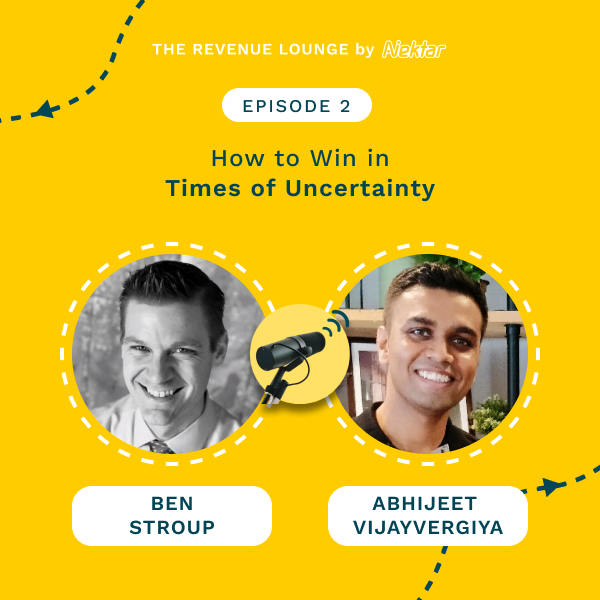
Ep #2: How to Win in Times of Uncertainty
Listen Now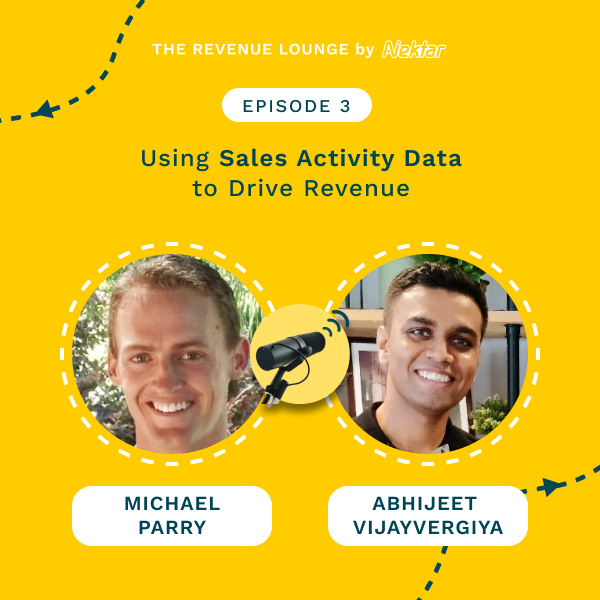
Ep #3: Using Activity Data to Drive Sales Productivity
Listen Now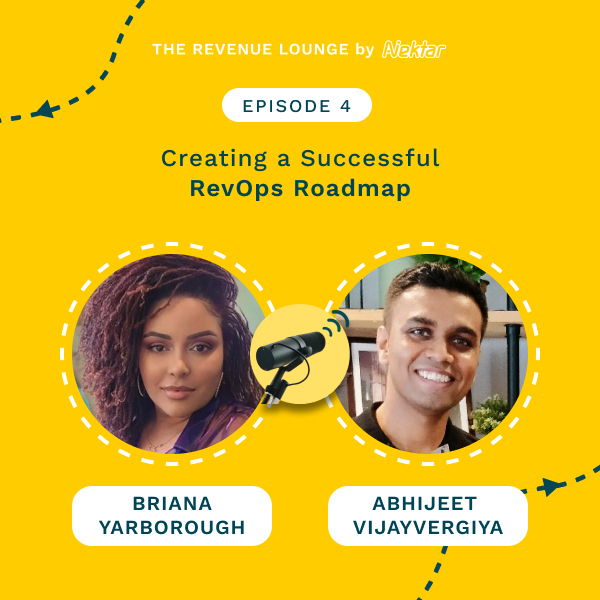
Ep #4: Creating a Successful RevOps Roadmap
Listen Now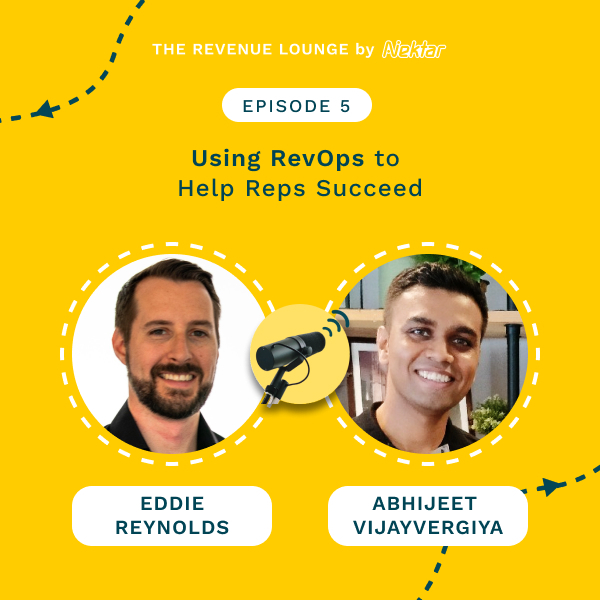
Ep #5: Using RevOps to Help Reps Succeed
Listen Now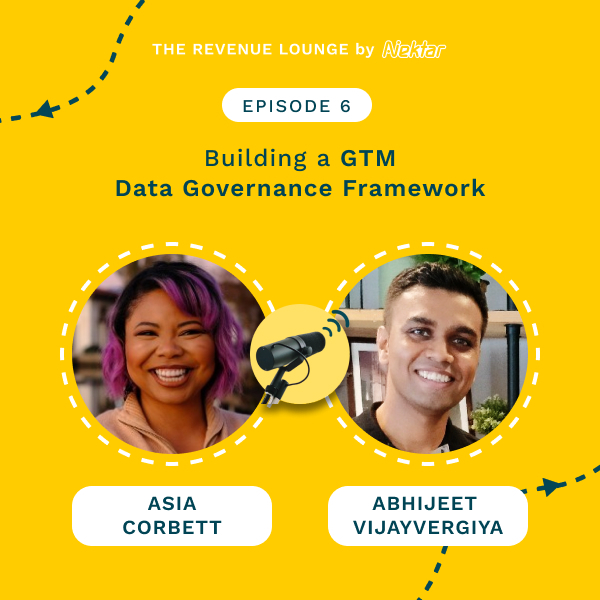
Ep #6: Building a GTM Data Governance Framework
Listen Now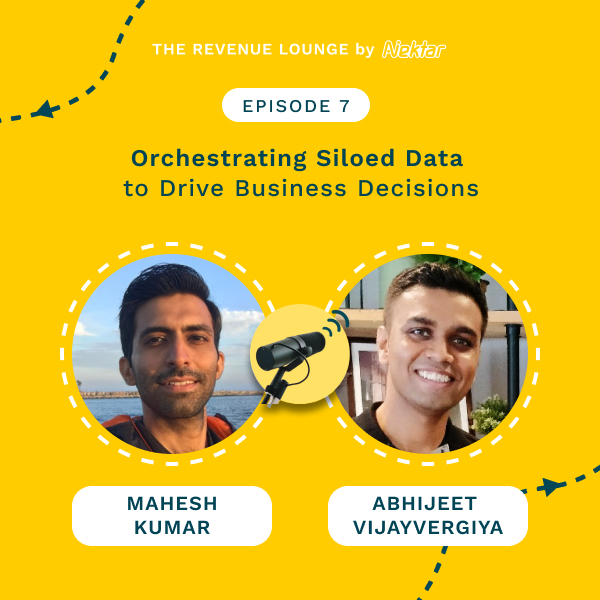
Ep #7: Orchestrating Siloed Data to Drive Business Decisions
Listen Now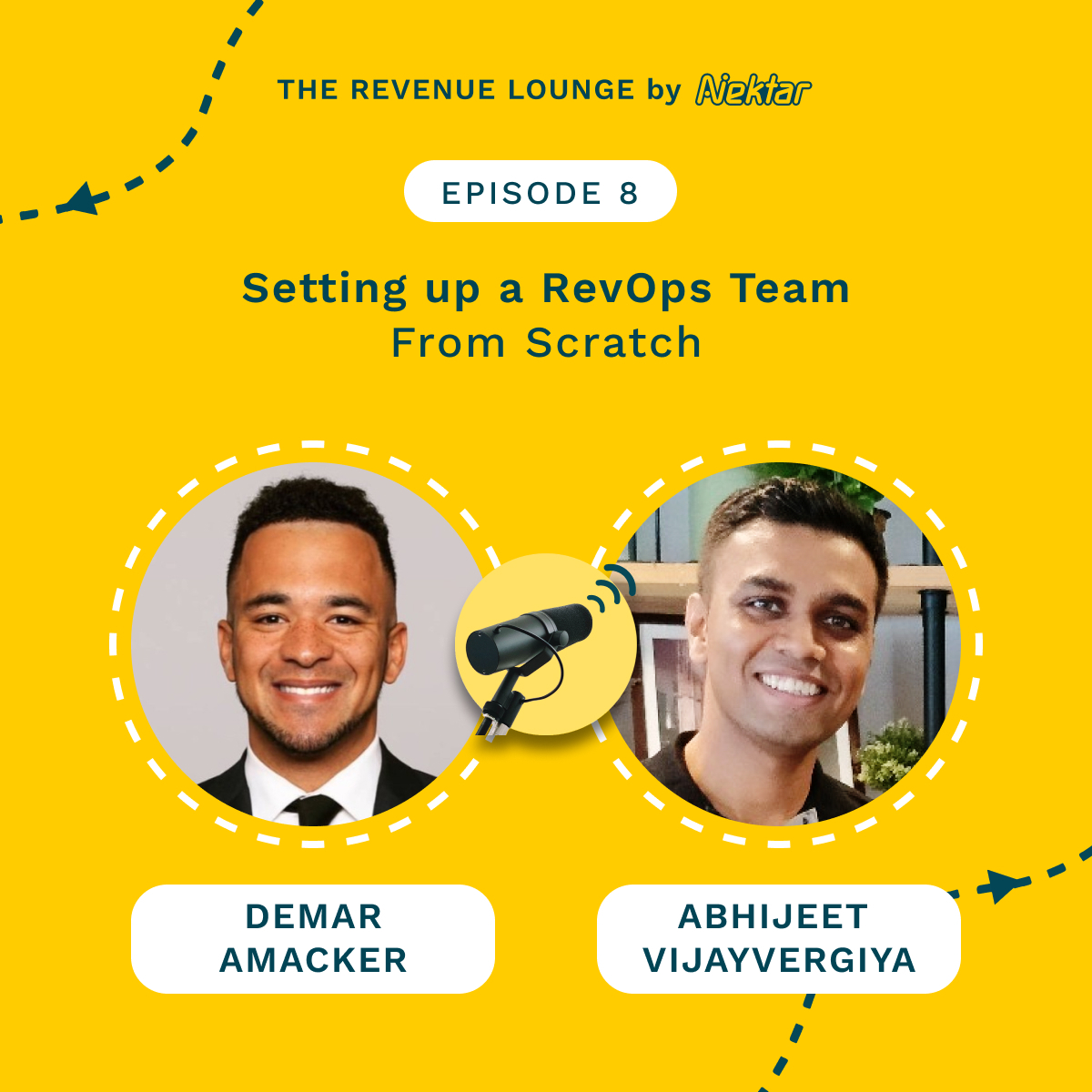
Ep #8: Setting Up a RevOps Team From Scratch
Listen Now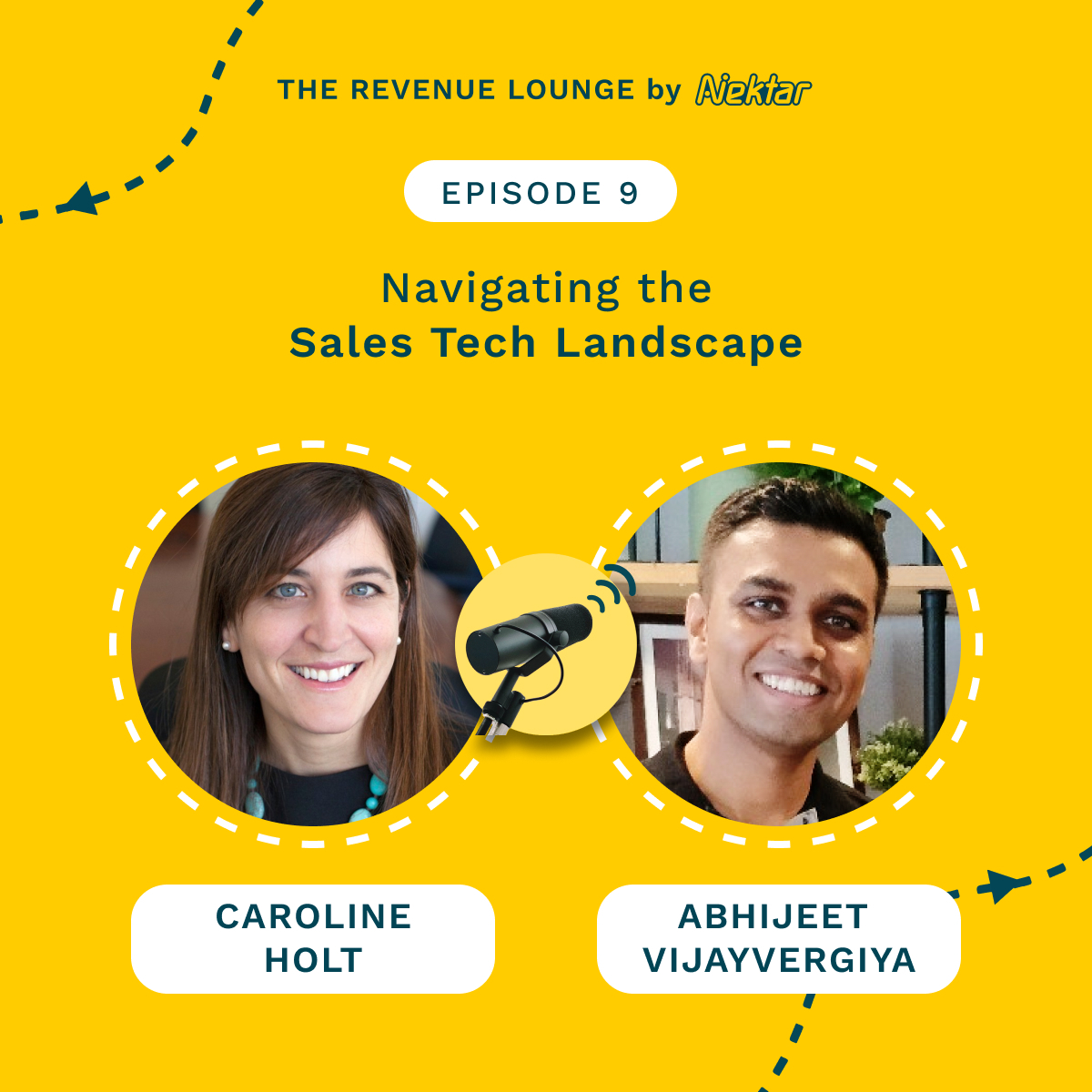
Ep #9: Navigating the Sales Tech Landscape
Listen Now